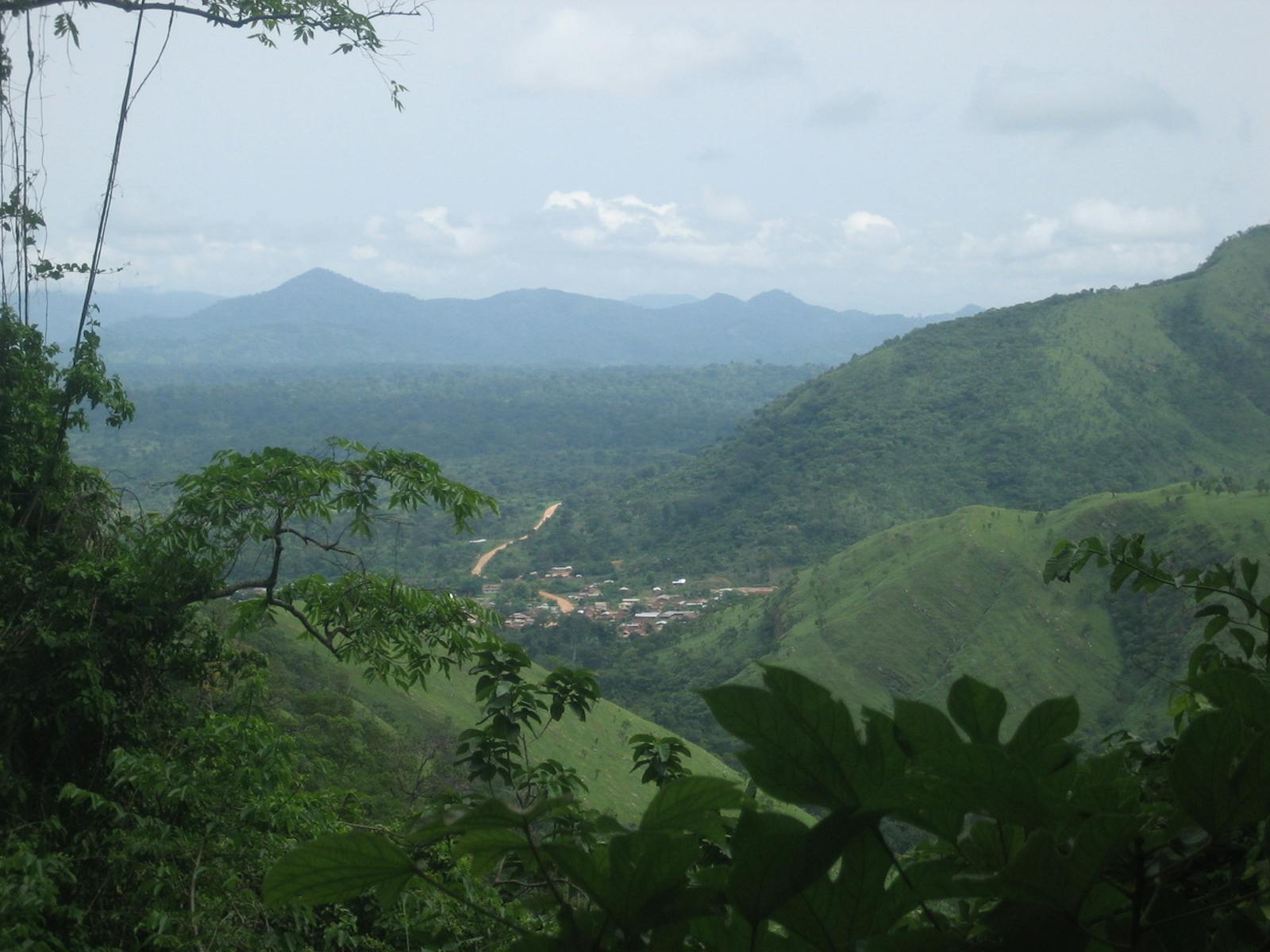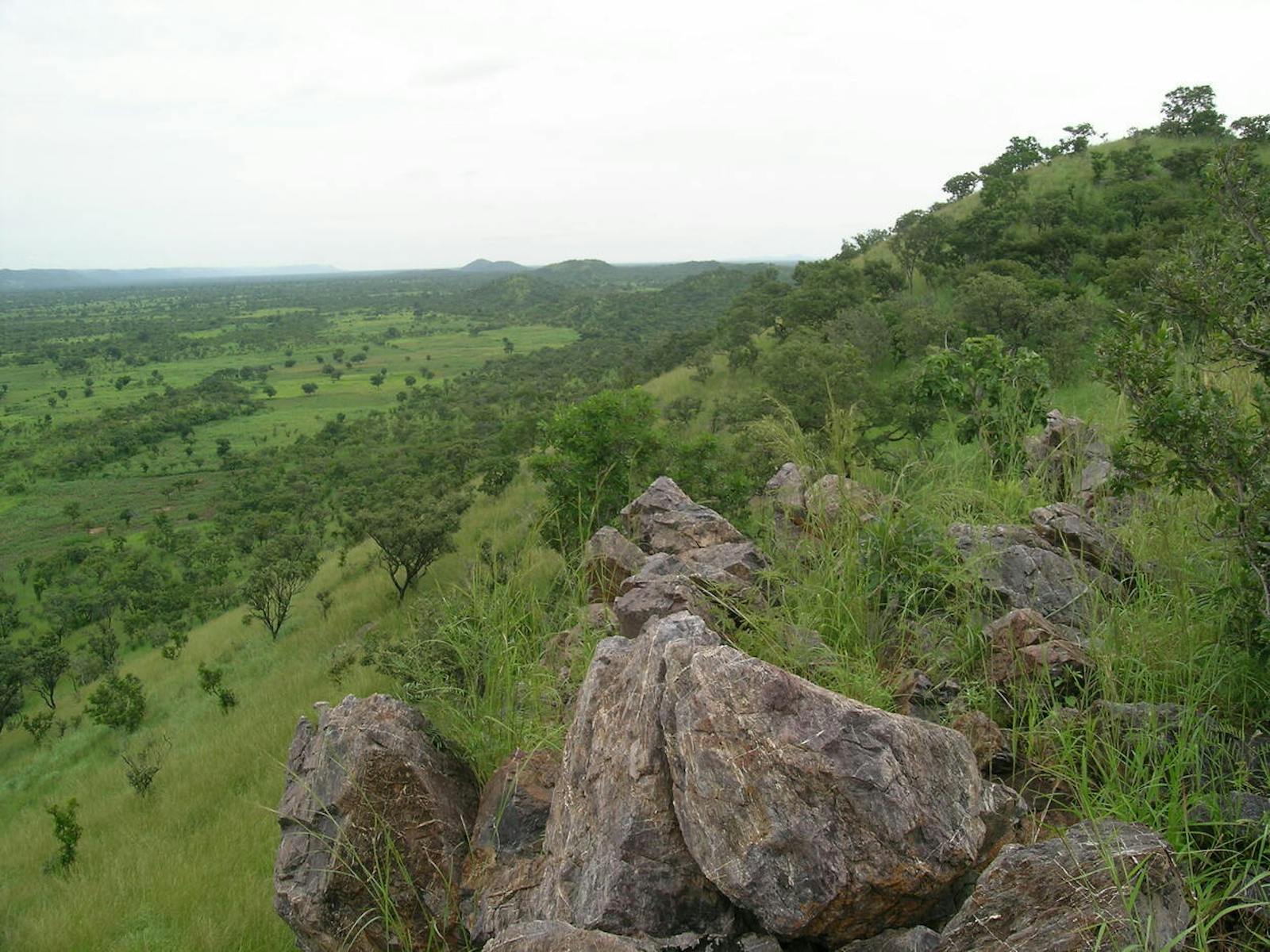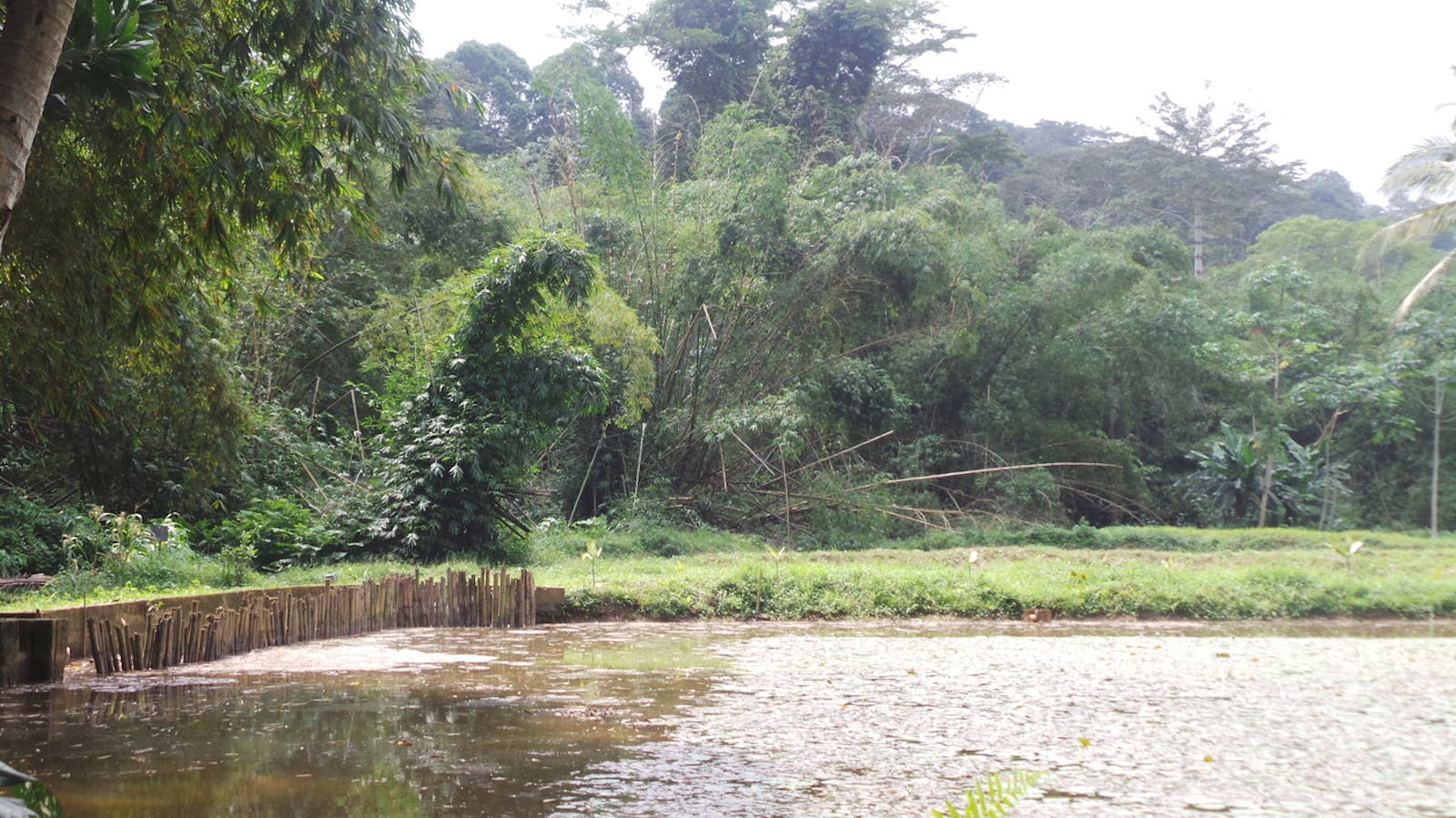Eastern Guinean Forests
The ecoregion’s land area is provided in units of 1,000 hectares. The protection goal is the Global Safety Net (GSN1) area for the given ecoregion. The protection level indicates the percentage of the GSN goal that is currently protected on a scale of 0-10.
Bioregion: West African Coastal Forests & Savanna (AT19)
Realm: Afrotropics
Ecoregion Size (1000 ha):
19,013
Ecoregion ID:
11
Conservation Target:
23%
Protection Level:
10
States: Benin, Côte d’Ivoire, Ghana and Tog
Known by the local people as “messengers of God” for their habitual movements between the treetops and the ground, the king colobus monkey inhabits the Eastern Guinean Forests, but only to the east of the Sassandra River. For many species living in this ecoregion, the Sassandra River—which separates the Western Guinean Forests ecoregion from this one—has influenced their distribution and evolution. The gradual transition of this ecoregion, from moist evergreen forest in the south of Côte d’Ivoire and Ghana to dry semi-evergreen forest further north, provides the perfect habitat for a rich assortment of flora and fauna.
The ecoregion extends from the east banks of the Sassandra River in western Côte d’Ivoire to the edge of Lake Volta in Ghana. There is a small extension east of Lake Volta in the Togo Hills. The Dahomey Gap is a dry lowland area and a major biogeographical barrier on the ecoregion’s eastern edge. Topography generally undulates between 50 and 300 m, with occasional inselbergs rising to over 400 m. Within the Togo Hills, the maximum elevation reaches 1,000 m.
Temperatures in the south range between 22ºC and 34ºC, whereas in the north, temperatures can reach a maximum of 43ºC and fall to 10ºC. There are distinct wet and dry seasons, with a longer dry season than in the Western Guinean Lowland Forests ecoregion. In Benin and Togo, rainfall seldom exceeds 1,500 mm, but further to the west rainfall can average 2,500 mm per year.
The moist evergreen forests in the extreme south of the ecoregion are represented by trees including Entandroophragma utile, Khaya ivorensis, and Triplochiton scleroxylon; the semi-deciduous forests in the northern parts are dominated by Celtis spp., Mansonia altissima, Pterygota macrocarpa, Nesogordonia papaverifera, Sterculia rhinopetlal¸and Milicia excelsa. In the forest fragments in the Togo Hills, trees such as Antiaris Africana, Diospytos mespiliformis, Afzelia Africana, and Ceiba pentandra can also be found.
.%20Image%20credit%20%C2%A9%20Edwin%20Butter%20%7C%20Dreamstime.jpg)
The king colobus monkey (Colobus polykomos) is the flagship species of the Eastern Guinean Forests ecoregion. Image credit: © Edwin Butter | Dreamstime
This ecoregion lies within the Upper Guinea forest block of the Guineo-Congolian regional center of endemism. Four small mammals are strictly endemic to this ecoregion: Wimmer's shrew, the Ivory Coast rat, Cansdale's swamp rat, and the Togo mouse. The rare pygmy hippopotamus also occurs marginally in the western part of this ecoregion.
Small populations of African forest elephants are present, often isolated in unconnected forest patches. These elephants play a crucial role in the regeneration of tree species such as Tieghemella heckelii and Balanites wilsoniana. The ecoregion is also rich in bird species and shares several restricted-range species with the Western Guinean Lowland Forests. Approximately 120 butterfly species are believed to be endemic to the West African forest ecoregions, along with several butterflies narrowly endemic to the Togo Hills.
The forest cover has been reduced to fragmented remnant patches, found among large areas of agricultural land. These forests are mostly located in protected areas managed by national wildlife or forestry departments. In Ghana, important protected areas include Kakum National Park, Bia National Park, Nini-Suhien National Park, and Agumatsa Wildlife Sanctuary. There are also numerous forest reserves used for timber production.
In Côte d’Ivoire, the largest remaining forested areas are found in the southeastern region, particularly in Marahoué National Park, along the Comoé River, and in various forest reserves. Local communities also protect numerous small forest patches as sacred groves. In Ghana, it is estimated that there are between 2,000 and 3,200 sacred groves, though they have not been comprehensively mapped.
Forest loss in this region has primarily resulted from slash-and-burn agriculture for coffee and cocoa production, as well as commercial logging and fuelwood collection in unprotected forests near burgeoning urban centers such as Abidjan and Accra. Additionally, the logging of natural forests for valuable hardwoods, such as iroko and mahogany, has contributed to the decline in forest area across all four countries in this ecoregion.
Where forestry management authorities lack capacity, roads built for commercial hardwood extraction have allowed agriculturists and commercial hunters to penetrate further into the forests.
The impact of bushmeat hunting, driven by growing demand in both urban and rural areas, has already led to the extinction of a previously endemic primate, Miss Waldron’s red colobus, and continues to threaten several endangered species.
Priority conservation actions for the next decade:
- Enhance the level of forest and wildlife protection by upgrading managed areas to national parks, wildlife sanctuaries or reserves, e.g. supporting Ghana in their effort to legally protect areas by establishing Globally Significant Biodiversity Areas and Provenance Protection Areas.
- Support the development of forest management plans to achieve sustainable timber production.
- Assist local communities to develop alternative livelihoods including mushroom farming.
-
-
1. Critical Ecosystem Partnership Fund. 2015. Ecosystem Profile: Guinean Forests of West Africa Biodiversity Hotspot.
2. White, F. 1983. The vegetation of Africa, a descriptive memoir to accompany the UNESCO/AETFAT/UNSO. United Nations Educational, Scientific and Cultural Organisation. Paris: France.
3. Nature & Development Foundation. 2018. Supporting the development of Forest Management Plans. [Online]. [Accessed 15 January 2018]. Available from: http://www.ndfwestafrica.org/list_of_projects/supporting-the-development-of-forest-management-plans/ -
Cite this page: Eastern Guinean Forests. Ecoregion Snapshots: Descriptive Abstracts of the Terrestrial Ecoregions of the World, 2021. Developed by One Earth and RESOLVE. https://www.oneearth.org/ecoregions/eastern-guinean-forests/
-







